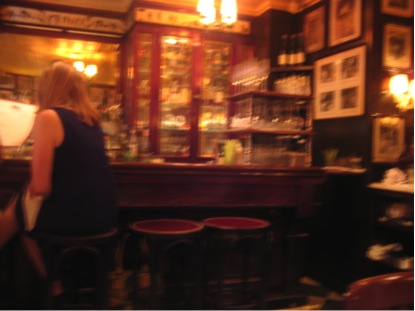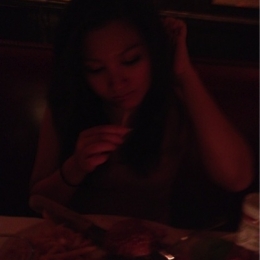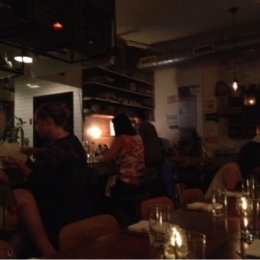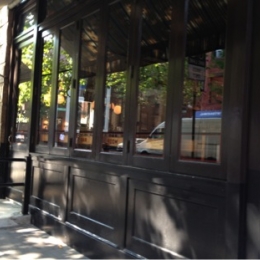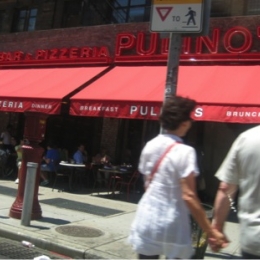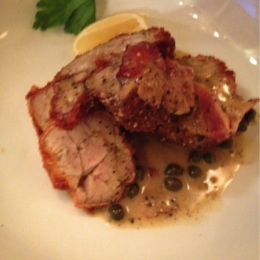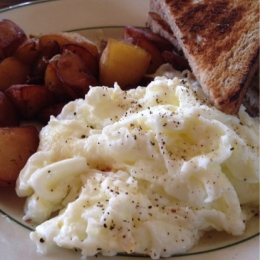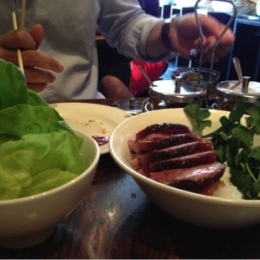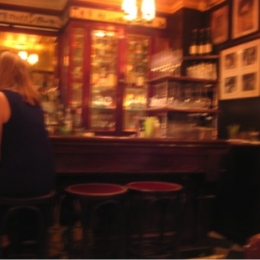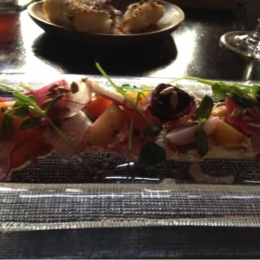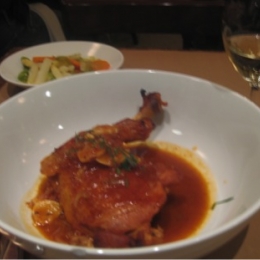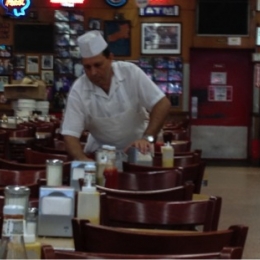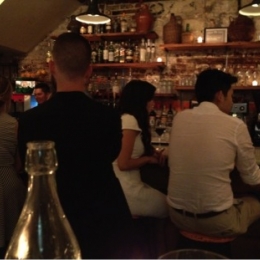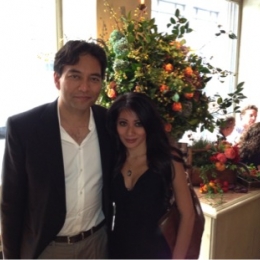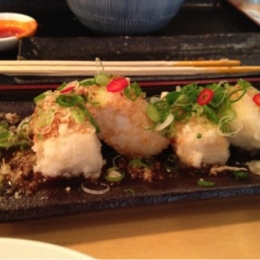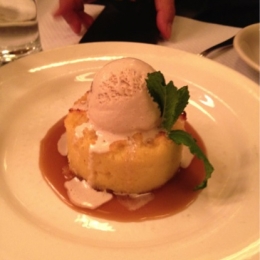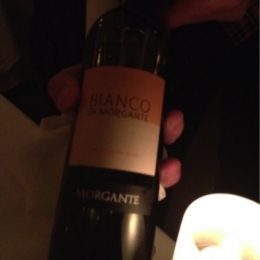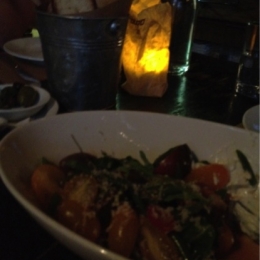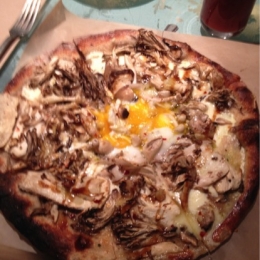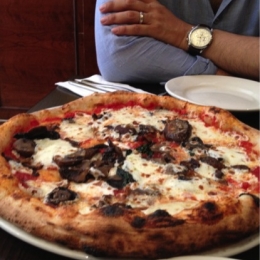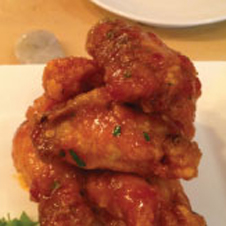The Keith McNally Experience
Our reservation was for 10.30 p.m., but we were only seated at our table by 11.45, and that was absolutely fine, because one of the points of this scenester circa-1937 Villager redone is to linger for as long as possible at the pokey but brilliantly bodacious bar—peddler of some of the city’s best retro cocktails—where you can literally fall into a stranger’s Negroni and be the better for it.
In any case, it is the best hour to drink in the delicious details of the Great Revival: the black-and-white checkered tiles on the floor are new, so are the tin pressed ceiling above the oak bar and the thirties silhouette cutouts that adorn what remains of the original wood paneling behind it. At the back room, or so I was told, where most of the real wheeling and dealing—and eating—takes place, the remnants of the original hangout—framed pictures of movie stars and sportsmen, old NY frescoes—are still very much in evidence.
And when you finally arrive at your table, you can sense a deepening in the air: it is as if you are being sucked deeper into some kind of inner sanctum, all crimson and clubby, and suddenly you’re part of an elite membership you don’t remember having registered for. It is a place, in other words, that is allowed a certain amount of conceit, but when the greatest turns out to be its food, which is anything but second-rate, you do wonder whether or not you are, in fact, in a rather special place.
And so when you’re done combing the room—Alan Rickman at 11 o’clock, Rachel Maddows at 2 o’clock, an insanely handsome Latin supermodel type sitting so close you can’t actually turn to look at him for fear of being caught gawking—and your gaze finally deigns to settle on your plate, stay there awhile, for that is where the greatest work of resuscitation has left its mark. Especially if there is a steak there, preferably the côte de bouef for two, which I have never tried but friends swear is a thing of beauty, or the bone-in New York strips, said to have the perfect texture and char. Both, apparently, are of the grain-fed Black Angus beef variety, courtesy of Creekstone farms. Both are divine.
My daughter practically dived into her starter of roasted bone marrow, well-salted and rustic, and nicely paired with cone-like baguette ‘soldiers’ and shallot confit. The dish is certainly not for the faint-hearted, but such is the beauty of children and their avid embrace of comfort food. Next, she went, out of curiosity more than anything else, for the overhyped Black Label Burger, which is supposedly made of a blend of short rib, brisket, shirt and a specially aged rib-eye, and which, at $26, once made it the most expensive burger in town.
‘And?’ I asked. ‘I’m not sure,’ she said, ‘It’s O.K…. but weird.’ ‘You’re going to have to be more specific,’ I said. ‘What do you mean, weird? Good weird or bad weird?’
She shrugged. ‘Oh, I don’t know, it’s all a bit too… strong.’
I took a bite, and sure enough, I understood how it could be problematic, especially for a girl her age, to whom the finer side of funk gets instantly lost in translation—besides, since when does a burger taste and smell like aged beef? But we both polished off the fries, which were c’est parfait.
For my own part, I loved my trout meuniere, wickedly buttery and loaded, for added crunch, with crabmeat and brioche croutons as I did the simple eloquence of my starter, a dish of roast baby beets studded with leeks, walnuts and Vermont chevre. When my daughter asked me to recall other dishes I’d enjoyed there I cited the roast chicken, which these days comes with braised chard and pommes aligot, as well as the pasta za za, a robust carbonara-style pasta dish that has become one of the restaurant’s mainstays.
Sadly, by the time we were done with the mains, it was already close to 1 a.m. and we were simply too stuffed for dessert. During much of the meal I didn’t even have space for wine, because at that hour the stomach simply goes on strike.
It was then that I realized the disadvantages of not being able to nab a table between normal dining hours—7 to 10 pm, which is when most mortals eat their dinner—and thought, there is a reason why an experience is exactly what it is, an experience, a cinematic experience, the Keith McNally experience, because it takes you away from the every day. But while you’re at it, there is no reason why you shouldn’t follow what Walker Evans once said: “Stare. Pry, listen, eavesdrop. Die knowing something. You are not here long.”
